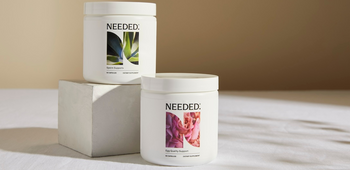The Federal Food and Drug Administration (FDA) announced earlier this week that they are banning the use of Red No. 3, a food coloring additive that gives certain foods a bright red color. In this digital day and age, there are so many sources sharing information that it’s not always easy to drill down to what’s real and how it impacts you.
We’re answering your questions about the FDA red dye ban and what it means for you. Keep reading for a straightforward, easy-to-understand FAQ.
What is the Red 3 Dye FDA Ban?
The FDA is banning the use of FD&C Red No. 3, a bright red food dye, in foods and ingestible drugs. The ban stems from the Delaney Act, a U.S. law prohibiting any food additives found to cause cancer in humans or animals.
The state of California banned the use of the dye and five other food additives when they passed the California Food Safety Act in 2023.
Why did the FDA Ban Red 3 Dye?
A 2012 review of clinical studies found that extremely high doses of FD&C Red No. 3 caused cancer in male rats.
In a 2021 study by the California Office of Environmental Health Hazard Assessment, researchers found a possible link between the dye and certain behavioral issues in children, such as decreased attention spans.
In 1990, the FDA banned the use of this dye in cosmetics and topical drugs. However, they allowed it to remain in foods because there wasn’t enough evidence to prove that ingesting the dye caused cancer in humans.
What is Red 3 Dye?
Red Dye 3, or FD&C Red No. 3, is an artificial coloring that gives foods, drinks, and some medications a bright cherry-red color. While it isn’t as widespread as other food dyes, it’s commonly found in candy, cake decorations, cookies, frostings, and even some pills or syrups.
Red 3 dye is not naturally occurring, but it’s been used for decades to make certain products more visually appealing. In other countries, it’s often called “erythrosine,” countries like the UK and Australia limit the use of dye in food and drink.
What Foods Contain Red 3 Dye?
According to the Center for Science in the Public Interest, around 9,000 food items contain Dye 3, which is primarily found in candy and sweets. Some foods that contain the dye include:
-
The cherries used in fruit cocktails
-
Variations of candy corn and Peeps (though Just Born, Peeps’ manufacturer, confirmed in 2023 that they would no longer use the dye starting in 2025)
-
Some strawberry-flavored protein and energy drinks
-
Some brands of candy sprinkles
-
Some cookies, cupcakes, cake pops and snack cakes
-
Some brands of pork and meatless sausage
-
Imitation bacon bits
If the food is bright cherry red, it may have red 3 dye.
How do I find out Which Foods Contain Red 3 Dye?
The US Department of Agriculture maintains a branded food database called FoodData Central. Anybody can search the database to find which foods have red 3 dye.
Is Red 40 Banned?
Red Dye 40, also known as Allura Red AS, is another food dye that adds a bright red or reddish-orange color to foods and drinks, similar to red 3. Red 40 is much more widely used and is not currently banned.
Some advocacy groups argue that red 40 is as dangerous as red 3, as some studies have shown a link between the dye, DNA damage, and colonic inflammation in mice.
For most people, Red 40 is considered safe when consumed in moderation. However, if you’re concerned about potential reactions or prefer to avoid artificial ingredients, you can look for products labeled “dye-free” or colored with natural alternatives.
When do Companies have to remove Red 3 Dye from Their Products?
According to the FDA, manufacturers have until January 2027 to reformulate any food or drink containing Red Dye 3, including imported foods. The deadline for manufacturers of ingested drugs is January 2028.
The Bottom Line
The FDA’s decision to ban Red Dye 3 highlights the importance of staying informed about what’s added to the things we eat and drink. While the risks associated with this dye may not directly affect most people, it’s a good reminder to pay closer attention to food labels and understand the ingredients we put into our bodies.
We have the power to make choices that prioritize health and safety for ourselves and our families, but we need to be knowledgeable and remain vigilant. Stay informed by using resources like the USDA’s FoodData Central and ingredient labels.














